Smarter together: AI poised to augment human creativity
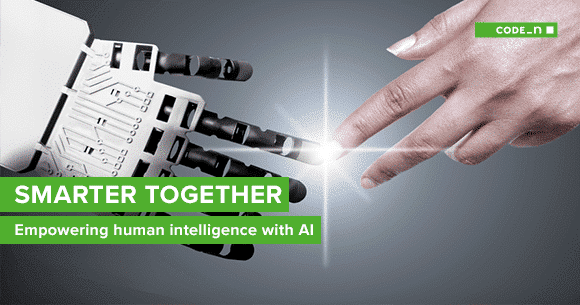 With the emergence of new technologies, the future of work and the future of society are becoming more and more intertwined. We are living in exciting times where digital assistants schedule meetings and chatbots work alongside humans. So we need to figure out how to leverage both human and artificial intelligence. Always on the lookout for entrepreneurs with fresh, unconventional business concepts, the CODE_n CONTEST is back this year for the sixth time. One of the fields of focus of this year’s startup competition is Machine Intelligence, so we are going to look at technologies such as machine learning, deep learning, neural networks, and natural-language processing – which all come under the discipline of Artificial Intelligence (AI). AI is now part of human life. From business applications to everyday situations, sometimes we are almost unaware that many of us interact with AI every day.
With the emergence of new technologies, the future of work and the future of society are becoming more and more intertwined. We are living in exciting times where digital assistants schedule meetings and chatbots work alongside humans. So we need to figure out how to leverage both human and artificial intelligence. Always on the lookout for entrepreneurs with fresh, unconventional business concepts, the CODE_n CONTEST is back this year for the sixth time. One of the fields of focus of this year’s startup competition is Machine Intelligence, so we are going to look at technologies such as machine learning, deep learning, neural networks, and natural-language processing – which all come under the discipline of Artificial Intelligence (AI). AI is now part of human life. From business applications to everyday situations, sometimes we are almost unaware that many of us interact with AI every day.
It’s predicted that AI and machine learning will impact on all areas of our daily lives by 2025, with huge implications for industries ranging from transportation and logistics to healthcare, home maintenance, and customer services. We sat down with Klaas Wilhelm Bollhoefer, former chief data scientist, now founder and managing director of Birds on Mars, to find out more about his work and his views on the growing momentum of machine intelligence and its real-world applications in consumer and business environments.
Iulia: Hi Klaas. To get us started, tell us how you would define artificial intelligence.
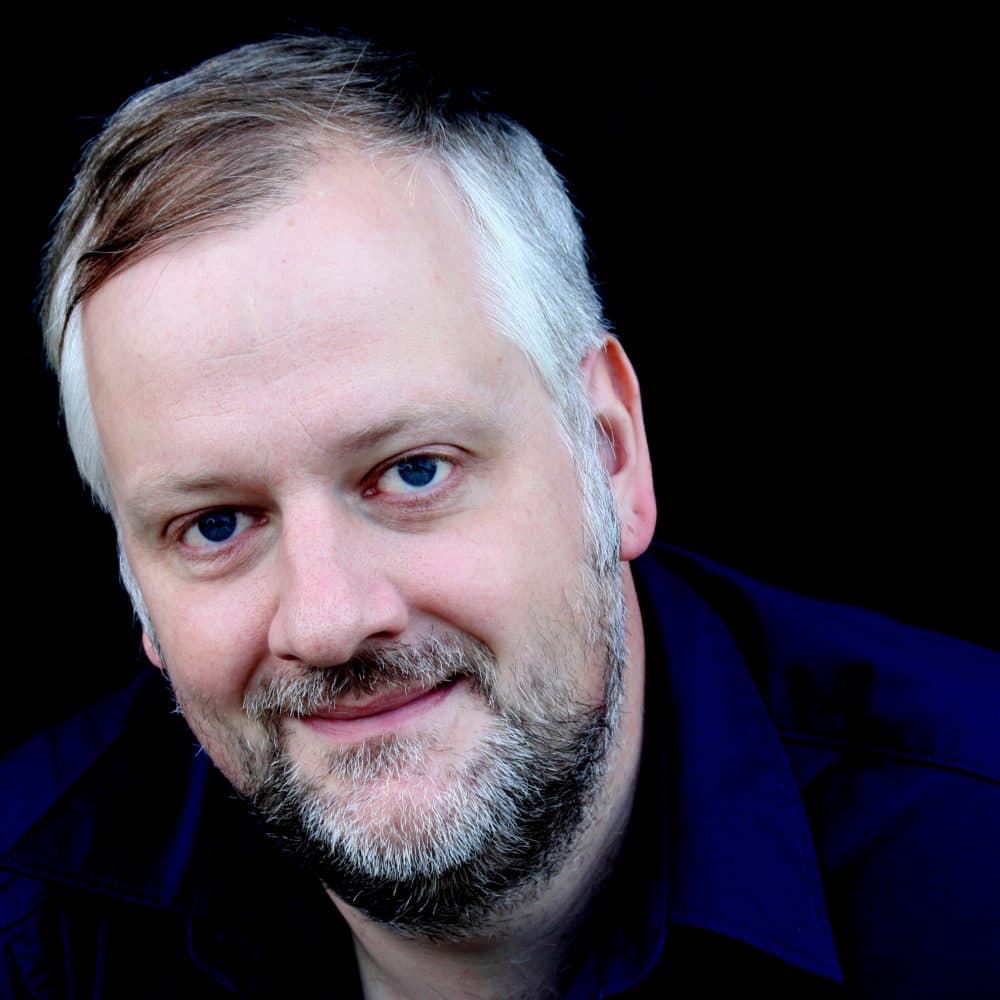 Klaas: Our current technological and business environment is rife with buzzwords, and AI is probably one of the most popular – for a good reason. But in my opinion, we’re far from having a single or clear definition of AI. It’s a term that describes many things – a bunch of technologies we run into. From a research point of view, AI is the quest to build machines with human-like intelligence, but despite clear advances in this field, I think that at the moment we’re still a long way from inventing real artificial intelligence. There are lots of developments and there’s a lot of research, and we read a lot about it, but there’s still quite a bit of work to be done before we get to anything comparable to human intelligence. In the business world, AI is enabling firms to work smarter and faster – or do more with significantly less. It’s important to mention that artificial intelligence is a catch-all term spanning a number of different technologies. So there’s machine learning, deep learning, robotics, computer vision, cognitive computing, natural language processing, and knowledge reasoning – and these are just some of the key areas of artificial intelligence.
Klaas: Our current technological and business environment is rife with buzzwords, and AI is probably one of the most popular – for a good reason. But in my opinion, we’re far from having a single or clear definition of AI. It’s a term that describes many things – a bunch of technologies we run into. From a research point of view, AI is the quest to build machines with human-like intelligence, but despite clear advances in this field, I think that at the moment we’re still a long way from inventing real artificial intelligence. There are lots of developments and there’s a lot of research, and we read a lot about it, but there’s still quite a bit of work to be done before we get to anything comparable to human intelligence. In the business world, AI is enabling firms to work smarter and faster – or do more with significantly less. It’s important to mention that artificial intelligence is a catch-all term spanning a number of different technologies. So there’s machine learning, deep learning, robotics, computer vision, cognitive computing, natural language processing, and knowledge reasoning – and these are just some of the key areas of artificial intelligence.
Iulia: What is AI typically used for, or for what kinds of applications?
Klaas: Machine intelligence is everywhere now – from e-commerce platforms to chatbot technologies like Siri or Amazon Echo, or self-driving cars such as those made by Tesla Motors or Google’s Waymo. In terms of the actual technology, Siri for example uses natural language processing to interpret voice commands and respond accordingly. Then there’s Google’s DeepMind, which, among other, uses deep learning. It can make connections and work out meanings without having to refer to predefined descriptive algorithms. Instead, it learns from experiences and uses raw data as its inputs. Then if we look at manufacturing, AI is also used for predictive maintenance. Businesses working in manufacturing are looking at ways to optimize processes, both in terms of efficiency and costs. A great way to do this is with data-backed “intelligent” algorithms. There’s also robotic process automation. This is being used for highly repetitive tasks which are currently performed by humans. Machine learning algorithms are being integrated into analytics and CRM platforms to gather information to better serve customers. More recently, researchers have been using machine learning to build robots that can engage in social interactions.
Iulia: A number of leading entrepreneurs and academics have highlighted the potential threats posed by artificial intelligence, especially if it’s not harnessed properly. Where do you stand on this? Is rampant AI really a threat to humanity?
Klaas: It all depends on how we use artificial intelligence. Currently, AI is just a piece of technology that we can use to make products and services. AI will only become dangerous if humans use it foolishly. I don’t feel threatened as such, and it’s up to us humans to decide how and where it should enter our lives, or how we can use its powerful capabilities wisely. We need to understand and explain what machine learning is capable of, how we can build AI without losing control of it, and how we monitor the different kinds of systems. We should study and embrace AI; we need to open our minds and as weird as this may sound, we will all have to learn to “unlearn” most of what we “know.” For instance, with the rise of self-driving vehicles, we’ll have to unlearn how to drive a car. The digital customer services interface is also changing – we’ll need to learn how to interact with voice assistants and chatbots, and these are all the kinds of things that come with these changes. So, my advice is simple: Learn as much as possible, join forces with the experts who know about this area, and understand where and how AI can be used to add value today and tomorrow.
Iulia: Is there an organization regulating AI at the moment?
Klaas: I think we’re not there yet, but there are a lot of important initiatives, not just on a political level, but industrial as well. There’s also a lot of research into what is called Explainable AI (XAI). Especially deep learning algorithms use complex structures and logics, and for us as human users, this is extremely difficult to understand or comprehend. This could be an issue with certain systems, such as military applications or autonomous vehicles – especially if we need to understand failures or the decisions systems make when we don’t expect them. This is why research topics such as XAI have been developed. As with any new technology, artificial intelligence can also reflect the mindset of its creators. There’ll be more and more regulation regarding XAI – to deal with the uncertainty regarding the things that could happen if we create complex solutions to solve complex problems. There’ll be a shift toward developing machine learning techniques that produce more explainable models, while also maintaining prediction accuracy. The goal is to make AI verifiable and more transparent, and this will build trust in the technology and encourage wider adoption. There are also lots of ethical implications. We all have a professional responsibility to build ethics into our systems from the ground up. In my opinion, it will still be a number of years before we have a framework of regulatory controls or establish a code of ethical conduct, but there are numerous signs that more and more people are concerned about transparency and potential tendencies that we’ll have to fix. Five years ago, no one was even thinking about these factors. The technology was just mind-blowing, everything was new, and we only thought about speeding things up.
Iulia: You are an optimist when it comes to AI and you believe that we need to form closer bonds between humans and machines. How do you plan to do that?
Klaas: First of all, I’d like to say that I’m not just an AI optimist, I’m optimistic about humanity as well. I truly believe in human nature and our ability to create and use technology in “a human way.” I’m convinced that we’ll be able to make the most of AI in the same way that we’ve made the most of all the other technologies that came along in the past. The more we understand how AI works, the more we’ll achieve for our economies and societies.
Iulia: Will a time come when robots are able to develop social skills?
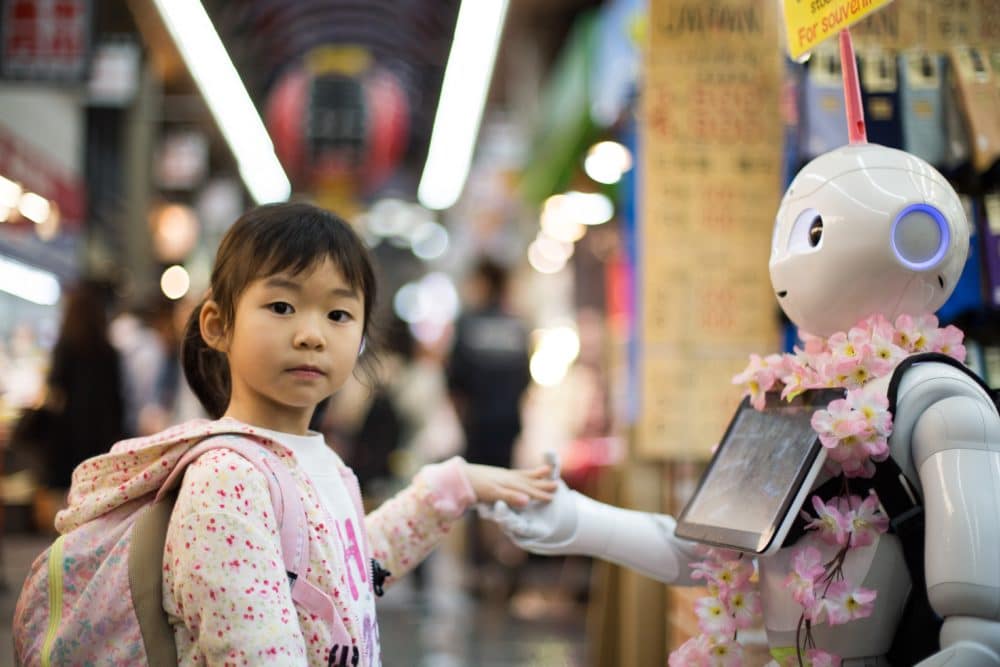
Klaas: It depends how we define social skills. I wouldn’t say I’m an expert in this particular area, but I’ve read a lot about it and although I think our individual intelligence is unique and can’t be copied, the way we behave in social terms as groups of individuals isn’t that complex. We’re not yet able to rebuild the human brain, but machines are capable of learning behaviors, gestures, facial expressions, and speech. So I’m convinced that in a few years we’ll be able to interact with machines in the same way we interact with other humans. This will also allow us to build really close relationships and deep connections with machines. We will place more and more trust in machines, and that’s the crucial bit. For instance, to turn back to the topic of autonomous driving – it will be important to build trust in self-driving cars. We’ll have to trust the machine-learning algorithms used in autonomous vehicles. Then, as we learn to trust artificial intelligence systems, we can create social networks which also involve machines.
Iulia: You recently founded a new company – Birds on Mars*. What were the origins of this enterprise and what’s its mission?
Klaas: At Birds on Mars, we connect different types of intelligence. We help companies understand the immense capabilities of AI and implement these new capabilities in their organizations. We establish strategies, structures, teams and applications at the intersection of human and artificial intelligence. We are at their side as they learn everything they need to know about artificial intelligence before creating and integrating AI services. For us, what’s important is the “something extra” created by using human intelligence and artificial intelligence together. We don’t believe AI will completely take over everything humans are doing right now. If we can combine the best things we get from human intelligence with the best things from AI and integrate them into powerful services and products, I believe we can build something that’s better than what we have right now. Our role is to explore the connections between humans and artificial intelligence. It’s important to mention that we also have our own innovation projects, such as our “artificial muse.” We’ve been cooperating with the renowned painter Roman Lipski for a while now on the development of an artificial alter ego – a machine that has been fed with data from Lipski’s images and is now autonomously creating additional art that resembles existing paintings, although in certain areas it also contains completely new ideas. The idea behind the artificial muse was not to replace the painter, but rather to serve as a source of inspiration for him so he can explore new realms.
Iulia: You often say “we need to create inspirational AI” – what do you mean by that?
Klaas: A lot of people are working on making machines creative and building “creative AI” systems. Machines are indeed capable of creating artworks or music – or anything, really. But that’s the easy bit, and all we achieve through that is making machines that do what creative humans do. At Birds on Mars, we don’t believe there’s any value in doing that. We don’t want to create more art or better art by using machines, we want to “create” better artists and more inspired workers. We want the “something extra” I mentioned earlier. We want machines and humans to collaborate, so they co-create and inspire each other. Machine intelligence should act as an enhancement to human creativity. We need to be creative in lots of areas and we want AI to help us fulfill our maximum potential – to support us and show us new ways to become creative. That’s what we call inspirational AI.
Iulia: What other areas could AI help us to make progress in? Is the technology actually capable of outperforming its creators?
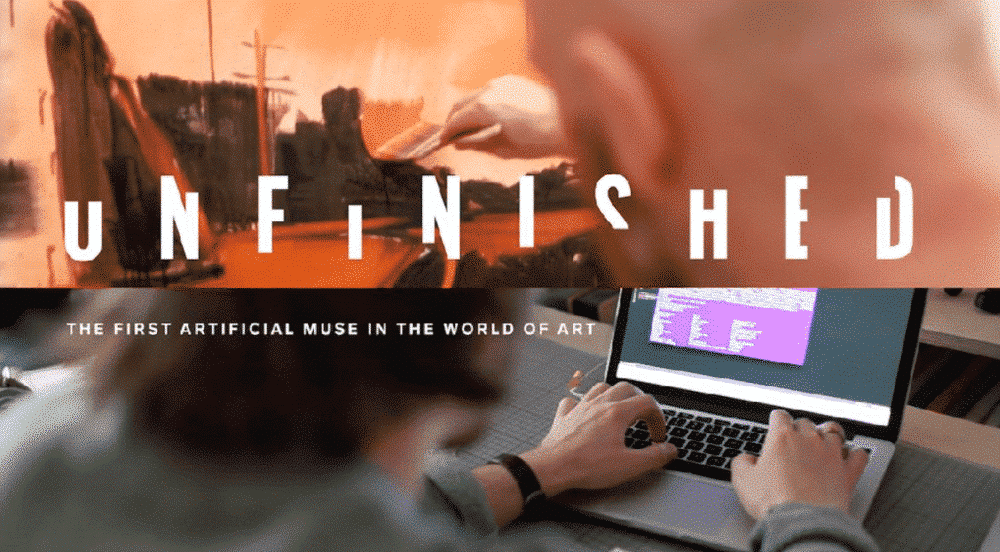
Klaas: I think the answer to your first question regarding making progress is all around us. AI will be present in all areas. If we look at the future of work, a lot of people feel threatened by AI and they’re worried it will take over their jobs – and it will, but only the more monotonous, routine tasks, and I strongly believe that this will be in our best interests.
We’ll be able to enter the job market and fulfill our potential by doing what we humans are best at. That’s not performing the same job eight hours a day until we retire. Creativity is what makes us humans what we are, by adapting to different situations, or entering into social interactions, or collaborating or communicating with others, and so on. If we can see AI systems as a kind of enabler for our own creative potential in the future, we’ll soon be able to take the idea behind our artificial muse and use it in the workplace. That’s why we’ve also started building a kind of “enterprise muse” to help with brainstorming or creative sessions at any kind of organization – or ideation processes, by inspiring teams and individuals. We’re currently involved in the process of transferring our concept of an artificial muse from the world of art into other areas. We want to translate the concept of an artificial muse into the workplace of the future and build an initial prototype. We’re learning lots of new things at the moment. What if we could redefine the way we work and communicate and come up with innovations based on smart services or smart devices? What if we could learn from each other and inspire each other? How can we build a sense of trust between humans and machines? These are the types of questions that motivate us to keep moving forward with our work. So we talk to people and ask them what inspires them. We’re interested in combining the strength of human intelligence with artificial intelligence. We’re exploring the connections. These are amazing times. A lot of things will change in the future – dramatically. Our entire lives will change. We need to unlearn how we work today. I think it’s up to us humans to be the designers or the creators of our own future.
Iulia: As you know, CODE_n is looking for the most disruptive founders and companies out there – startups that are eager to spearhead digital transformation through pioneering technology. What, in your opinion, would be the most favorable environment for AI startups to succeed and thrive? What would enable us to trigger an AI revolution?
Klaas: Startups are very valuable in creating ideas, in showing what’s possible, by bringing new business models. However, we need to enlarge the current ecosystem and learn more from each other, connecting each other’s capabilities and skills. Startups need to be connected to platforms, organizations and knowledge. This requires a close cooperation with a very diverse range of people from different spheres of research, arts, established corporations, but also from the political and legal arena.
I think that CODE_n can do this by bringing all these actors and experiences together. To unlock the full potential of AI, we need a diversity of people, backgrounds and opinions. My advice would be to not only consider the technological and economical aspects of AI, but also forge links with the social sciences and humanities, to include them in the conversation and debate about the future of artificial intelligence. AI is more than an engineering problem. We must start thinking outside the box and look toward other domains too. The AI capability in itself is not the core value proposition. The real value is upsizing and mimicking human behavior. Not just our raw data, but our aspirations, purpose and intent. To stay ahead of AI in an increasingly automated world, we need to start cultivating our most human abilities on a societal level as early as possible.
Iulia: Thank you, Klaas, for taking the time to share your views on AI with us. It’s been a fascinating conversation and we’re looking forward to witnessing the development of your enterprise muse!
*Birds on Mars is a Berlin-based company that enables organizations to develop strategies, structures, teams, and applications at the intersection of artificial and human intelligence.



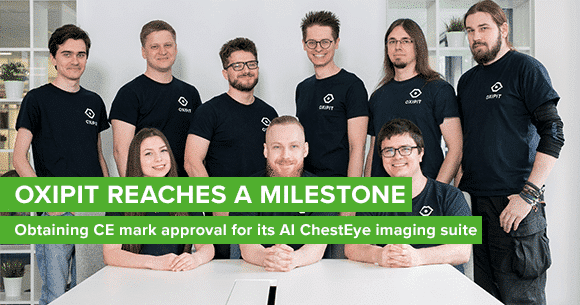

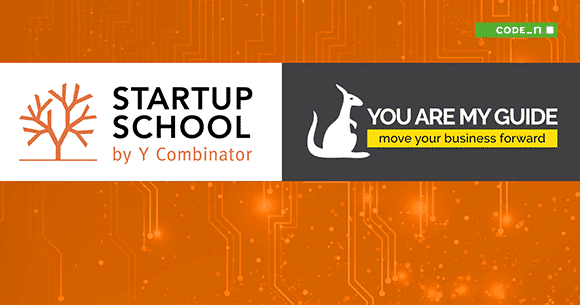
Write a comment